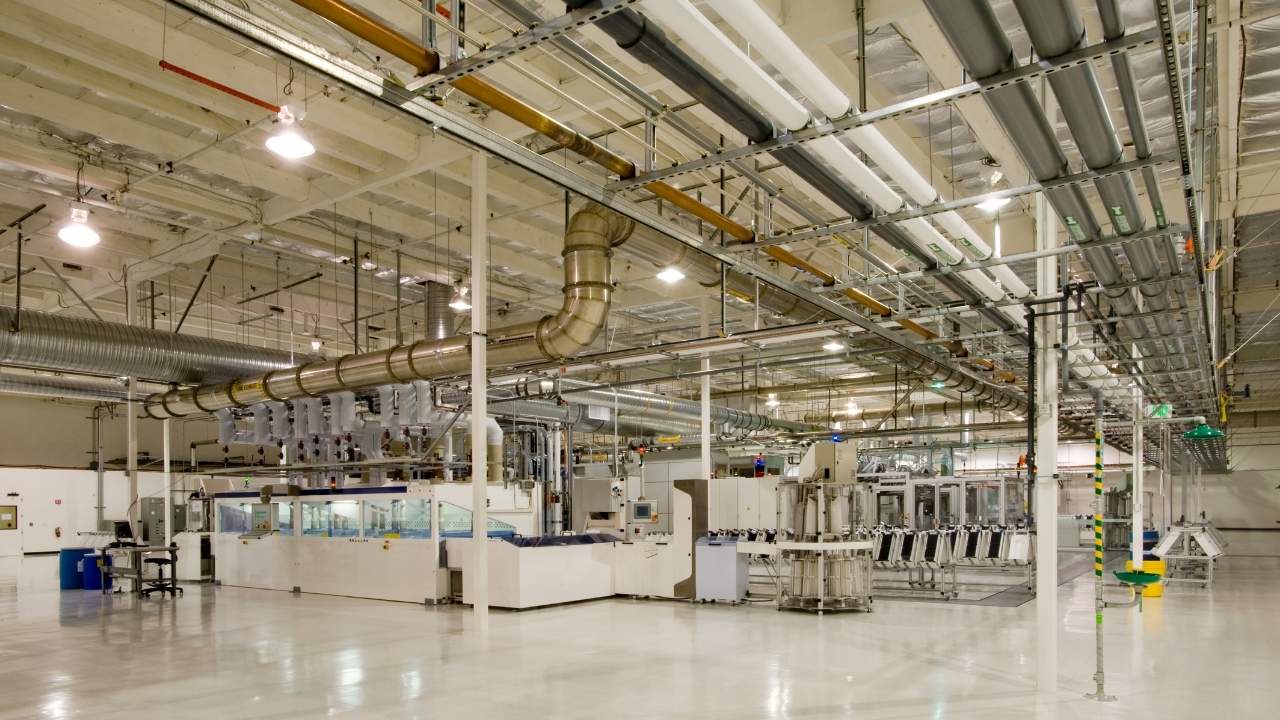In this fast-changing business world, an integrated inventory system has emerged as a strategic hub to exploit growth potential. It is no longer just a stock tracking system. Rather, it orchestrates information flows across departments with a symphony that harmonizes procurement, sales, and fulfillment. Find the growth potential through the window of an integrated inventory! Optimize your stocks, improve the fulfillment process, and satisfy your customers for a thriving business!
The Hidden Costs of Siloed Inventory Management
While inventory systems play a pivotal role in operations, many organizations still manage their stock fragmented across departmental silos. On the surface, this approach may seem convenient. However, beneath this apparent ease of control lies a multitude of underlying challenges insidiously drain productivity and profitability. Isolated data leads to discrepancies between inventory listings, resulting in inaccuracy that breeds inefficiency. Lacking cohesion, daily operations become disjointed – components unable to move in seamless coordination.
More problematically, siloes obstruct managers’ view of the full operational picture. Strategic decisions made from a partial perspective run the risk of suboptimal outcomes. When the right hand is blinded to the left’s actions, agility in responding to marketplace dynamics withers. Silos thus strand the business – incapacitated from fluidly adapting as customers’ needs change.
Understanding Inventory System
What is an Inventory Control System?
A system for controlling inventory is a complete tool used by businesses to monitor the flow of goods from the manufacturers through warehouses and eventually at the point of sale. It includes a variety of capabilities that include inventory monitoring, order management, and replenishment procedures. By keeping precise information about inventory levels and locations as well as movement These methods warrant that businesses can satisfy customer demands with no over- or under-stocking.
Types of Inventory Systems
- Perpetual Inventory System: These systems constantly refresh inventory data in real time as transactions take place. They impart immediate insight into inventory levels, which allows companies to make informed choices quickly.
- Periodic Inventory System: In contrast to perpetual systems periodic inventory systems refresh inventory records at certain intervals, like monthly or quarterly. While they are simpler and less expensive, however, they do not impart the same amount of accuracy in real-time.
Key Components of Inventory Management
An effective inventory management system requires several essential elements:
- Stock Tracking: Monitoring the quantities and locations of inventory items to ensure accurate records and eliminate discrepancies.
- Order Management: Handling the entire ordering process from making orders to suppliers, to fulfilling customer orders, and ensuring timely and accurate delivery.
- Replenishment Procedures: Maintaining optimal inventory levels by automatically reordering stock following predefined thresholds and forecasts of demand.
Common Challenges in Inventory Management
The management of inventory poses problems that can seriously impact the performance of your business:
- Stockouts and Overstocking: Balance inventory levels to avoid stock overflow that ties up capital and can increase the cost of carrying, while also stopping stockouts that could lead to lower sales and less customer satisfaction.
- Poor Forecasting The ability to accurately predict demand is crucial to ensure optimal levels of inventory. Inaccurate forecasts can lead to either excess inventory or not meeting demand.
- Data discrepancies: Ensure consistency and accuracy across various inventory records. Data discrepancies can lead to incorrect decision-making and financial errors.
The Importance of Integration with Other Business Operations
Enhancing Overall Business Efficiency
Integrating inventory systems with other business functions–such as finance, sales, and production–streamlines processes and eliminates redundancies. This approach is holistic and leads to greater accuracy of data, quicker decision-making, and improved efficiency of operations. For instance, live data sharing between sales and inventory systems makes sure that sales personnel have current information regarding product availability which allows them to respond quickly to customer inquiries and conclude deals more energetically.
Facilitating Informed Decision-Making
With integrated systems, companies collect access to real-time, comprehensive data throughout all areas. This view is unified, allowing managers to look at data holistically instead of isolated, leading to better-informed strategic decisions. For instance, the integration of inventory data with financial systems can lead to more precise financial forecasting and budgeting using actual data on inventory levels and turnover.
Reducing Operational Costs
Integration can reduce the operational cost by optimizing the allocation of resources and reducing redundancies. Automated procedures eliminate the requirement to manually enter data which reduces labor costs and reduces the chance of human errors. Additionally, integrated systems enable efficient inventory management, which reduces the cost of carrying and minimizes losses due to spoilage or obsolescence.
Inventory & Finance: A Symbiotic Relationship
Financial Accuracy and Transparency
Integrating inventory data into financial systems will ensure precise tracking of the inventory value and also the cost of sales (COGS). This integration improves transparency and financial reporting and allows businesses to keep accurate financial statements. A precise valuation of inventory is essential to calculate the profitability of a business, assessing its the health of your finances, and making educated investment decisions.
Cash Flow Management
Achieving optimal levels of inventory directly affects the management of cash flow. By reducing the carrying costs associated with excess inventory, companies can improve their liquidity and manage their working capital. Effective inventory integration allows the monitoring of inventory levels at a real-time pace, which allows flexible adjustments to sales and purchasing strategies to ensure the health of cash flow.
Budgeting and Forecasting Enhancements
Integrated inventory systems that integrate inventory give important information to forecast and budget. By analyzing the rate of turnover of inventory as well as sales forecasts companies can make more accurate budgets as well as anticipate the future financial requirements. Advanced forecasting capabilities allow organizations to prepare for seasonal fluctuations, market trends, and sudden spikes in demand with greater accuracy.
Compliance and Auditing
A seamless integration ensures that the movements of inventory are accurately recorded in accounting reports, which helps to ensure conformity with the financial regulations. This consistency makes auditing easier and minimizes the risk of a discrepancy that could cause sanctions from the regulatory authorities. Integrated systems also aid in internal control implementation, improving the overall quality of governance in finance.
Advanced Technologies Facilitating Integration
- Enterprise Resource Planning (ERP) Systems: ERP systems unify financial and inventory system, thereby providing a central platform for managing data. The integration will ensure that the financial data is automatically updated in line with inventory transactions, thus reducing the need for manual intervention and increasing accuracy.
- Cloud Solutions: Cloud-based systems offer access to real-time data, which allows instant updates as well as collaboration between departments. The scalability and flexibility offered by cloud-based solutions make them perfect for companies looking to increase their stock and integrate financial systems without large initial investments in IT infrastructure.
Optimizing Sales with Inventory Integration
Boosting Sales Performance
Integrating inventory information into sales processes provides sales representatives with live availability information. This enables sales representatives to respond quickly to customer queries about the availability of their products and reduce the time it takes to conclude deals. Sales teams can also determine the most popular products and prioritize their marketing to increase revenue.
Enhancing Customer Satisfaction
Integrated inventory systems play an integral role in improving the customer’s satisfaction, by decreasing delays and stockouts. Customers are provided with accurate information regarding the availability of goods and delivery dates and this outcome in a more reliable and secure shopping experience. Happy customers will be more likely to be loyal customers and brand advocates.
Streamlining Order Management
Automatization in fulfillment and processing of orders ensures that orders are processed efficiently and precisely. Systems integrated facilitate seamless tracking of orders, from placing the order until delivery, decreasing mistakes and speeding up delivery times. This process of order management that is streamlined increases the efficiency and satisfaction of the customer.
Supporting Omnichannel Sales Strategies
Unified inventory data across all sales channels, be it retail, e-commerce, or wholesale–provides consistency in pricing and availability of products. This is essential for ensuring a seamless experience for customers across many platforms. Integrated systems allow companies to centralize their inventory management, reducing the possibility of discrepancies and making sure that every channel is informed of the current stock levels.
Informed Sales Forecasting
By studying past consumption patterns and the current trends in demand companies can predict sales more precisely. This information helps plan the amount of inventory and marketing strategies in a timely manner. A reliable sales forecasting process helps businesses meet the demand of customers without overcommitting resources, thereby optimizing efficiency in sales and inventory costs.
Targeted Marketing and Promotions
Integrating inventory data allows sales teams to pinpoint products that are slow to move and then implement targeted marketing strategies to eliminate excess inventory. Strategies like discounts or loyalty programs as well as bundle offers can be customized using real-time inventory information to ensure that promotions are efficient and timely. This method is targeted to maximize the effectiveness of marketing efforts and boost sales overall.
Streamlining Production with Inventory Data
Reducing Operational Overheads
Effective inventory management greatly reduces operational costs by reducing the wastage of raw materials and reducing the cost of excess production or expired goods. By ensuring that inventory levels are optimal businesses are able to warrant that their resources are used effectively, resulting in significant savings in costs and increased profitability.
Optimizing Production Scheduling
Analytics on inventory deliver useful insight into the state of inventory as well as demand patterns, which allow companies to align their production schedules to actual demand. Techniques such as Material Requirements Planning (MRP) and Just-In-Time (JIT) manufacturing assure that production is closely linked to the inventory levels and the demands of customers. This helps reduce the risk of overproduction, reduces storage expenses, and guarantees prompt delivery of goods.
Enhancing Supply Chain Visibility
Integrated inventory systems bring real-time tracking of raw materials as well as finished products, which improves visibility throughout the entire supply chain. This transparency helps improve collaboration with suppliers, allowing companies to anticipate and react to disruptions in supply chain processes proactively. A better understanding of supply chain visibility will ensure that production schedules stay on schedule, reducing delays and increasing overall efficiency.
Implementing Just-In-Time (JIT) Production
JIT processes are focused on producing products based on actual orders instead of forecasts. This helps reduce the requirement for huge buffers of inventory, reduces the cost of carrying, and minimizes the possibility of overproduction. JIT production is based on accurate inventory data and real-time demand information, which makes the integration of inventory essential for it to be successful in its implementation.
Quality Control and Assurance
Integrated systems allow for monitoring inventory quality in conjunction with production data. This integration makes sure that only the highest quality materials are utilized in production, which improves the quality of the finished products. Additionally, real-time information on quality allows for immediate corrective action to stop the continuance of processes that could cause a decrease in quality.
Collaborative Inter-Departmental Coordination
Centralized inventory visibility facilitates better communications and collaboration between production teams as well as other departments. For example, changes to the production plan or levels of inventory are swiftly reported to the supply chain, which allows the teams in all departments to modify their activities in line with the changes. This approach to collaboration improves the efficiency of operations, reduces the time to respond, and ensures that all departments are aligned with the overall business goals.
Versa Cloud ERP: The Integrated Platform Driving Operational Excellence
Achieving operational excellence demands leveraging the right solutions. Streamlining inventory, production, and supply chain management is pivotal to responding swiftly as market conditions evolve. Versa Cloud ERP emerges as a premier platform equipping businesses with the integrated insights and controls necessary to stay consistently ahead of disruption.
At its core, Versa simplifies complexities through an intuitive interface combined with powerful automation tools. From real-time stock visibility to optimized schedules and coordinated logistics, it delivers unified oversight of your entire value chain. Importantly, Versa’s cloud-based flexibility ensures anytime, anywhere access – an imperative for informed, agile decision-making in today’s fast-paced landscape.
Regular upgrades keep Versa synched with your growth trajectory, avoiding the hassles of traditional on-premise systems. Most distinctively, its seamless integration with a host of functions from 3PLs to finance optimizes interdepartmental synergies. In turn, this collaborative environment fosters strategic planning informed by holistic operational data.
In summary, Versa stands apart as an indispensable solution partner driving operational effectiveness, resilience, and long-term success, even amid uncertainties.
To gain tangible insights into Versa’s transformational capabilities through a free personalized demonstration, connect with a solutions specialist today. Experiencing first-hand how Versa streamlines complexity into clarity and opportunity could define your competitive edge for years to come.
To learn how Versa Cloud ERP can transform your inventory management system and empower omnichannel success, schedule a free personalized demo today.






